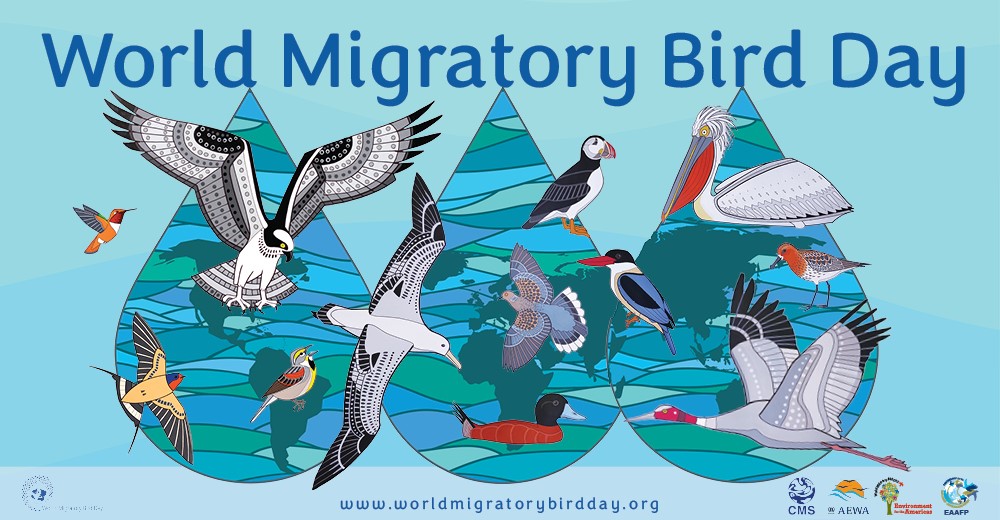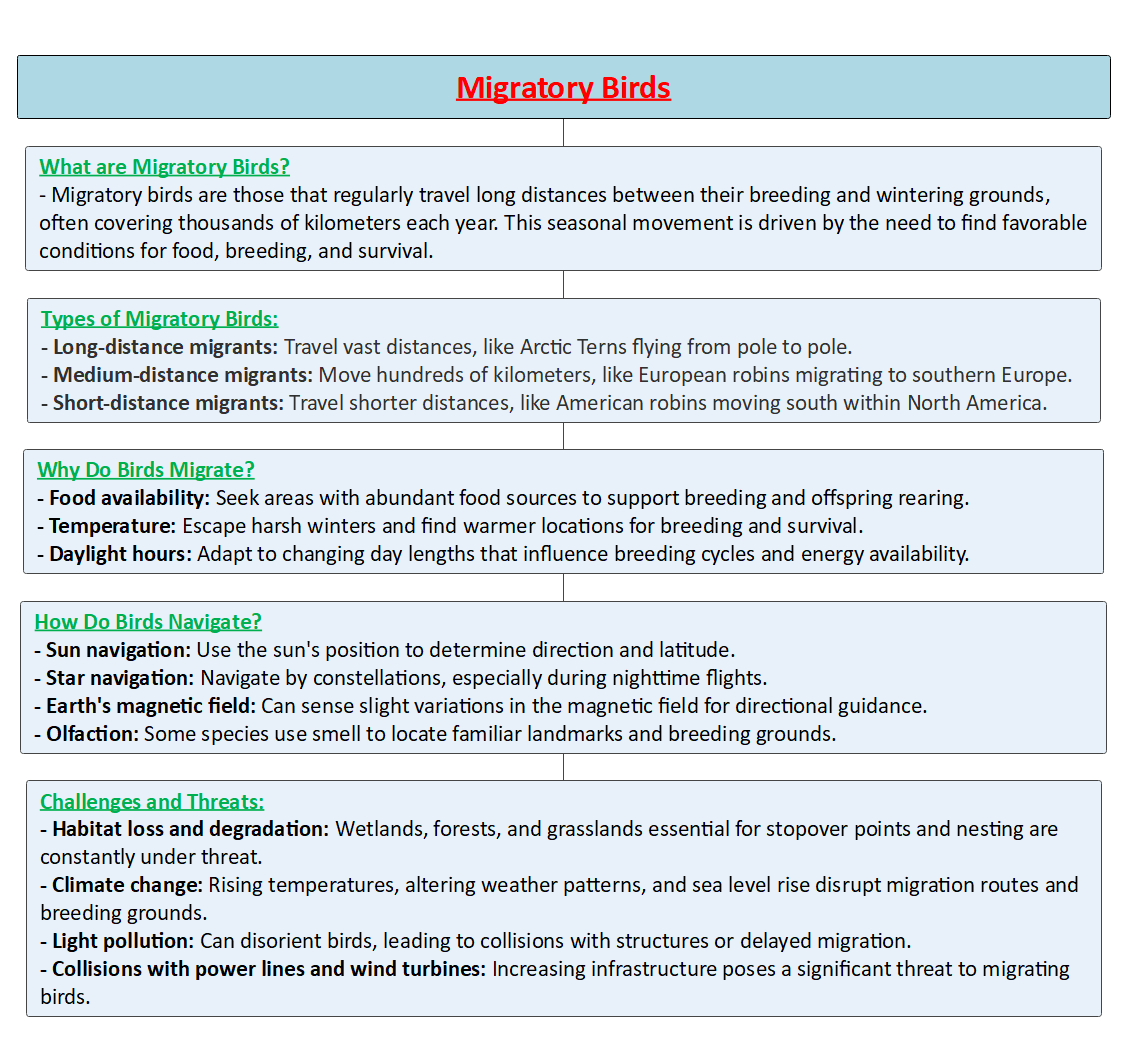Free Courses Sale ends Soon, Get It Now


Free Courses Sale ends Soon, Get It Now



Copyright infringement not intended
Picture Courtesy: https://www.cms.int/en/news/world-migratory-bird-day-2023
Context: Every year on the second Saturday of May, the world celebrates World Migratory Birds Day (WMBD), a global campaign dedicated to raising awareness about the importance of migratory birds and the threats they face.
World Migratory Bird Day
What are migratory birds and why are they important?
|
Convention on the Conservation of Migratory Species of Wild Animals (CMS) ●This international treaty, also known as the Bonn Convention, aims to conserve migratory species and their habitats. ●It was signed in 1979 and currently has 132 Parties (countries). ●It provides a framework for cooperation and coordination between different nations to protect migratory species. |
List of some migratory birds commonly found in India

|
PRACTICE QUESTION Q. Climate change is posing a significant threat to many migratory bird populations. Which of the following is NOT a consequence of climate change for migratory birds? A) Earlier ice melted in their breeding grounds, leading to mismatched food availability for chicks. B) Changes in weather patterns disrupt their migration routes and timing. C) Loss of coastal wetlands due to rising sea levels, impacting crucial stopover points. D) Increased competition for food and resources with resident bird populations at their wintering grounds. Answer: D Explanation: A) This statement is a potential consequence of climate change. As temperatures rise, earlier ice melt can impact the timing of peak food availability, affecting the synchronization between the arrival of migratory birds and the availability of prey for their chicks. B) This statement is a consequence of climate change. Altered weather patterns, including shifts in wind patterns and temperature changes, can disrupt traditional migration routes and timing. Migratory birds rely on predictable environmental cues for successful migration, and climate-induced changes can affect their ability to navigate. C) This statement is a consequence of climate change. Rising sea levels, attributed to global warming, can lead to the loss of coastal wetlands – important stopover points for migratory birds. Loss of these habitats can disrupt their migration, affecting their ability to rest and refuel. D) This statement is not a direct consequence of climate change. While climate change may indirectly influence resource availability and competition dynamics, increased competition with resident bird populations is a broader ecological concept and is not solely a direct result of climate change. |
© 2024 iasgyan. All right reserved